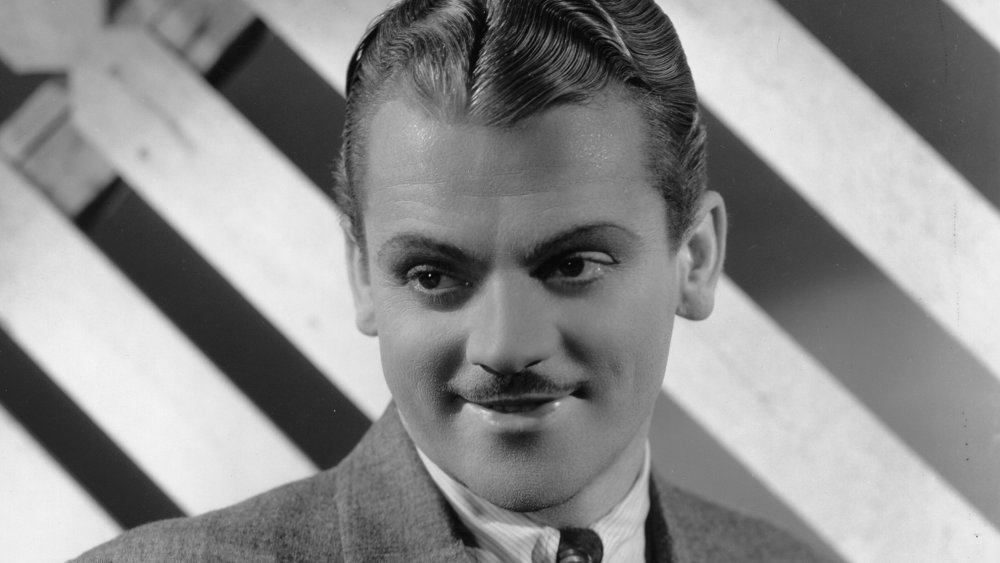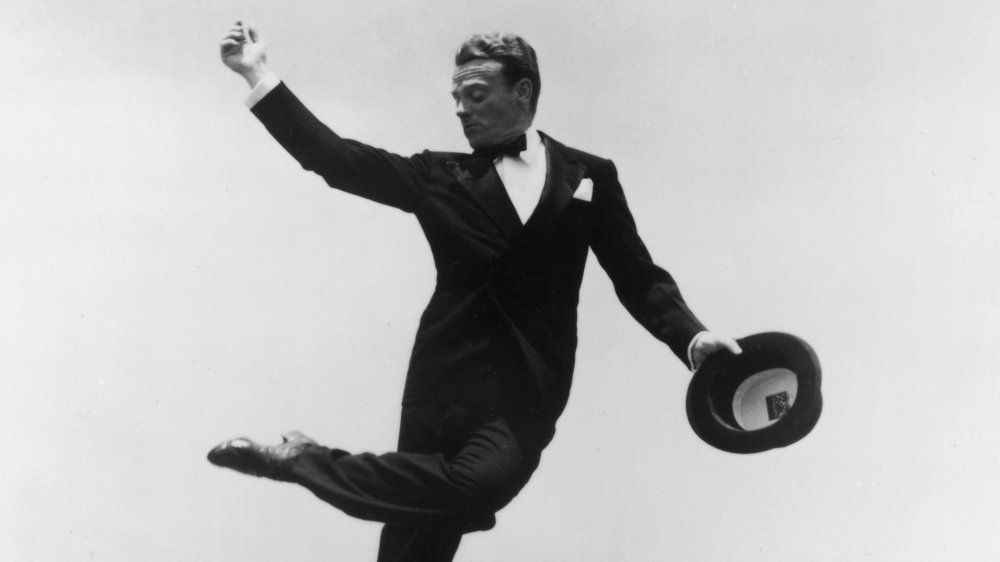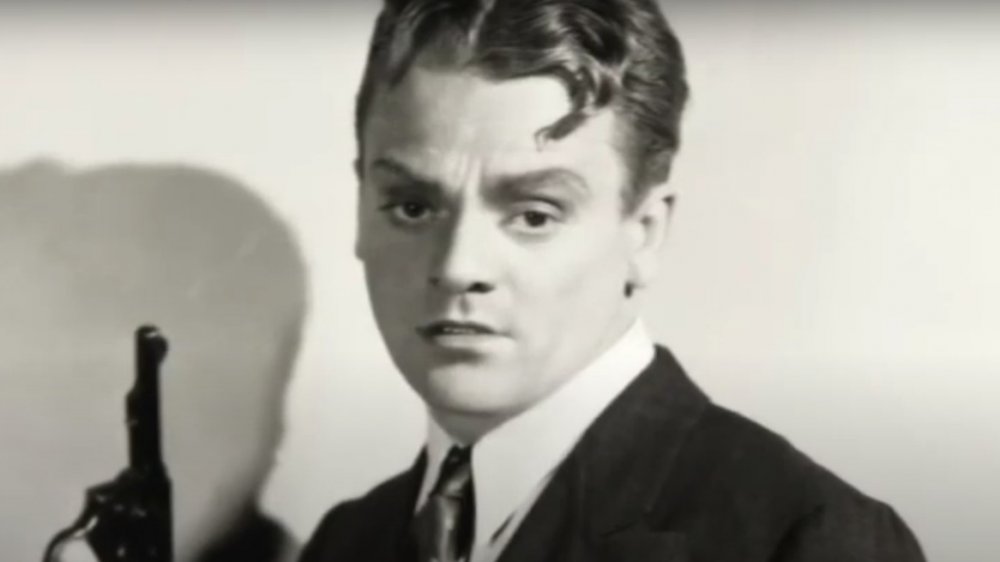Here's How James Cagney Made His Fortune During The Depression
So the stock market has crashed in October 1929 and millions of investment dollars have been lost. Vaudeville comedian Eddie Cantor checks into a New York Hotel, requests a room on the 19th floor. The clerk asks him, "For sleeping or jumping?" (Hat tip to History for the joke.) There's no question that the crash sent the U.S. economy into a horrific tailspin, with fortunes eradicated, the banking system imperiled, and people everywhere panicking — the Great Depression. But one thing it didn't cause was an increase in suicide, despite the jokes and the cartoons. At least, not at first. The year 1932 saw a marked increase in the rate of suicide, from 17.2 per 100,000 to 21.3 per 100,000. The roar that was the 1920s was being reduced to a frightened whimper.
Part of what the country lacked — besides ready cash, jobs, food, that sort of thing — was confidence, in the economic system and even in a government capable of righting the badly listing ship of state. Franklin Delano Roosevelt was elected in 1932, and in his first inaugural address reassured a terrified citizenry that the only thing they had to fear was fear itself. Take a deep breath. Hang on. Try to smile. Happy days were here again. Well, eventually. The movies played a big part in the quite crucial morale effort for America.
Cagney started out as a dancer
People were still short of cash, but a night at the movies — and it was an entire evening's entertainment — cost just five cents, as The Independent reports: a newsreel, an animated short, maybe a comedy short, a lesser-quality (and shorter) B movie, and then the featured attraction. People wanted diversion, and Hollywood gave it to them, with lavish and truly stunning musical epics (with incredibly long takes, featuring performers like Fred Astaire and Ginger Rogers) and cute kids like Shirley Temple ("FDR's accomplice in showing demoralized grown-ups how much spunky perseverance could achieve," says The Atlantic). And while diversion was important, with stories that resolved with happily-ever-after, there was also a market for anti-heroes. It was the rise of the gangster movie, with stars like George Raft, Humphrey Bogart, Edward G. Robinson — people who pushed back desperately against a system that seemed stacked against them. Stories of tough women and tough men, played by people like a spunky Irishman named Jimmy Cagney.
Cagney had one of those backgrounds that's characterized mostly by hard work. The family was poor, and the death of his father during the 1918 flu pandemic made things worse. JImmy ended up juggling multiple jobs to support the family, says his obituary in The New York Times. He went into vaudeville for the money, studying and stealing moves from other dancers.
Gangsters were his bread and butter
He went after parts in dramatic plays, too, and it was his performance as a "cowardly killer" in a stage melodrama that earned him a trip to Hollywood and a contract with Warner Bros. His work as a criminal in The Public Enemy. He famously smashed a grapefruit into a woman's face and held his own in a series of inexpensive crime movies that included ducking live ammunition (the studios couldn't be bothered with special effects in those days).
The movies hit a nerve with the public, and Cagney couldn't work fast enough. And it was work, not method or any other approach. The Times quotes him this way: "Talent was not nurtured, it was consumed. We did our job. If anyone was practicing art, I never saw it." Before long, Cagney and Warner Bros. were rolling in the dough. By 1935, says Mental Floss, Cagney was earning $60,000 a week in today's dollars — at the height of the Depression — as one of the industry's top-10 money-makers that year.
Eventually he got to revisit his dance skills — he took home an Academy Award in 1942 for the musical Yankee Doodle Dandy.
He once said, "Absorption in things other than self is the secret of a happy life." He died in 1986, age 86.


